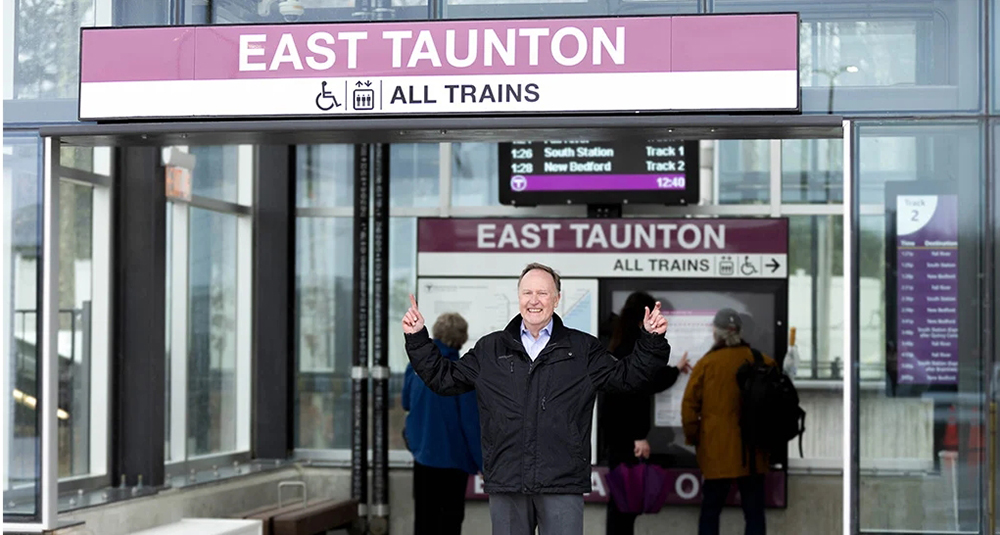The way we live, shop and work or learn has changed and seems to be ever changing - by David O'Sullivan

Welcome to 2022. This January is not an episode of ground hog day even if it feels like it. We are now two years into this pandemic and it has upended everything in our lives and in the construction industry. The way we live, shop and work or learn has changed and seems to be ever changing. We have made it this far and hopefully you were able to adapt and thrive during these times. However, what do we see for future as omicron has again threatened how we live our lives and do business?
Well the good news is that even with the latest wave of the pandemic, the overall economy is good and housing demand continues to be strong. The Builders and Remodelers Association of Greater Boston just held its economic forecast dinner and the guest was Elliot Eisenberg, the bowtie economist. According to Elliot, GDP was projected to be up 4-4.25 % this year, but even with omicron, it should be 3.5% with impact mostly in the first quarter of 2022. Consumers continue to spend and drive the strong economy but manufacturers and builders are able to sell all they produce so there is high utilization rate helping to keep economy strong. Government spending is on the decline for the short-term but probably in the 4th quarter, the infrastructure bill funding will contribute to strengthening the economy. The evil in the room is inflation which is above 6% and at levels not seen since the 1970s. The reason inflation may only be temporary is about 2% can be attributed to spike in energy and 2% to supply change issues. One of his concerns with the economy is unemployment. He feels it is too low. Employees have advantage now, which creates rising pay rates that could fuel inflation. The growth in wages is up 5% but workers don’t feel like their pay has improved because inflation is higher. So real wages are not really up when adjusted for the inflation. Inflation, according to Elliot, should quietly go away by 2023.
What does this mean for the construction industry? The demand is strong for housing and certainly labs in Boston. We are not building enough housing units in the area to keep up with demand. There were thoughts that the condominium market in Boston was sluggish due to pandemic concerns but in the last few months, supply has dropped to lowest levels in years and prices are increasing in response. Nationwide we need to build at least two million housing units a year to meet present demand, not the 1.7 million we are building. That is just not possible now with such tight labor market and supply issues as well as lack of developable land. The Boston area has an especially tight labor market due to limited number of people going into the trades for the last 10-15 years. There is a strong effort now to correct that but it will take time. The lack of developable land has been a real problem but progress is being made in Boston and surrounding communities as well, with rezoning efforts to increase density and provide some flexibility with land use regulations.
The office market remains in limbo as people and companies rethink what the needs are for space and what the future workplace will look like. Many have found there is no need to be in office to be productive and the pandemic forced work from home situation has turned into a long-term way to do business. This also impact the housing market as employees make at least work from home part of their regular routine and allow them to live farther from the office. Commuting only one or two days makes distance not as big an issue and some will need to go to their office even less. This could help ease the housing crunch by opening up opportunities for building new housing where there is available land.
So, in summary, as Elliot said in his closing comments, “It is a good time to be a builder.”
David O’Sullivan, AIA, is the president of O’Sullivan Architects, Inc., Reading, Mass.
Check out the New England Real Estate Journal's 2025 Fall Preview Spotlight
Explore our Fall Preview Spotlight, featuring exclusive Q&As with leading commercial real estate professionals and in-depth byline articles on today’s most relevant market topics. Gain insight into the trends, challenges, and opportunities shaping New England’s commercial real estate landscape this fall.


Shallow-bay wins on 495/128: A renewal-driven market with a thin pipeline - by Nate Nickerson

How long should I hold a property for it to qualify as an investment property in connection with a 1031 tax-deferred exchange? - by Brendan Greene and Mark McCue

30 years on South Coast Rail: A journey to connect Southeastern Mass. with commuter rail - by Rick Carey











.png)